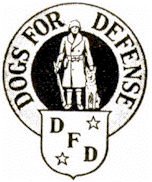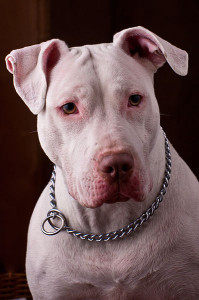My four-year journey is nearly at an end: My book, Citizen Canine: Our Evolving Relationship with Cats and Dogs, has just gone to press! The book will release on April 8, though you can pre-order it now on Amazon and Barnes&Noble. To commemorate this milestone, I’ve constructed a timeline of the major events in cat and dog history–a brief synopsis of the social evolution of pets from wild animals to quasi citizens.
A Brief History of Cats and Dogs
30,000 BC The earliest potential evidence for dog domestication, based on archaeological finds. Other evidence suggests dogs may have been domesticated thousands of years later.
10,000 BC An elderly human in Ain Mallaha in northern Israel is buried cradling a four-month-old puppy. The find is the first suggesting a close relationship between humans and dogs.
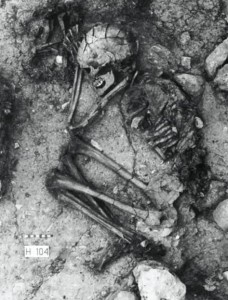
A human cradles a puppy in this 10,000 BC find in northern Israel. (Credit: Davis et al., Nature, 276, 608-610)
7500 BC A cat is buried with a human in a Neolithic village known as Shillourokambos on the southern coast of the Mediterranean island of Cyprus. The find represents the earliest evidence for cat domestication.
1950 BC Cats begin to appear in the art of ancient Egypt. Their proficiency at killing rodents and protecting Egyptian homes from death and disease would soon lead them to be revered as gods.

A statue of the cat goddess Bastet from ancient Egypt. (Credit: Guillaume Blanchard / Wikimedia Commons)
AD 200 Dogs are buried in Roman cemeteries with sentimental gravestones. One reads, “To Helena, foster child, soul without comparison, and deserving of praise.”
1233 Pope Gregory IX issues his Vox in Rama, which links felines to Satan and leads to the massacre of tens of millions of cats throughout Europe. Some scholars say the absence of cats led to an explosion of black rats, which brought the Black Death.
1500 Dogs begin to feature in scenes of domestic life in Renaissance art. In paintings from the time, canines take on human characteristics like love and sorrow, and feature as friends and companions.

In Bartolomeo Passarotti’s 1529 painting, Portrait of a Man with a Dog, a spaniel stares lovingly into the eyes of its owner. (Wikimedia Commons)
1637 French philosopher René Descartes declares that animals are soulless machines, a doctrine that helps justify centuries of canine vivisection.
1822 The United Kingdom passes the first serious animal welfare law. Two years later, the world’s first animal welfare organization, the Royal Society for the Prevention of Cruelty to Animals, is founded.
1866 Henry Bergh founds the American Society for the Prevention of Cruelty to Animals (ASPCA), America’s first animal protection organization. The society initially focuses its efforts on New York’s horses, but it soon turns its attention to the plight of cats and dogs.
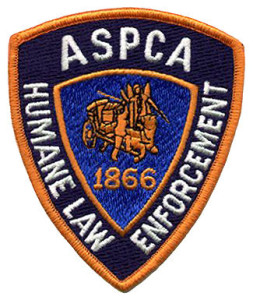
The American Society for the Prevention of Cruelty to Animals is the first animal protection organization in the U.S.
1880s Early flea and tick products begin to bring dogs indoors. Pets start to be seen as members of the family.
1893 Margaret Marshall Saunders pens Beautiful Joe, the “autobiography” of an abused dog who finds a loving home, one of the first told from a pet’s perspective. Mark Twain follows with his own pet autobiography, 1904’s A Dog’s Tale.

The 1893 novel, Beautiful Joe, is one of the first to be told from a pet’s perspective. (Credit: (Zuglao24 / Wikimedia Commons)
1894 A Baltimore judge rules that a cat is not property and thus can be stolen without repercussion. Dogs are similarly regarded as “worthless objects” in the eyes of the law.
1907 The vivisection of a dog at a London medical school sparks the Brown Dog Riots. Decades of debate over the use of cats and dogs in biomedical research would follow.

In 1903, psychologist William Bayliss of the University College London supposedly vivisected a dog without anaesthetic. (Credit: Wikimedia Commons)
1929 The Seeing Eye, the first American guide dog school, is founded, ushering in an era of pets as assistance animals. Today, cats and dogs do everything from comfort children with autism to sniff out cancer.
1942 Dogs for Defense begins training canines to go to war. Today, canines are a critical component of the U.S. military. “The capability they bring to the fight cannot be replicated by man or machine,” General David Petraeus, former commander of US forces in Afghanistan, has said.
1947 Kitty litter is invented, helping turn cats into indoor pets.
1954 The Humane Society of the United States is founded. Today it is one of the world’s largest animal welfare organizations.
1964 The Florida Supreme Court rules that pets are worth more than their market value. Cats and dogs aren’t just property in the eyes of the law; they begin to be seen as a special type of property that has interests and feelings.
1979 The Animal Legal Defense Fund is founded and campaigns for the rights of cats, dogs, and other animals in the legal system.
1990 The Americans with Disabilities Act requires hotels, restaurants, and other businesses to admit service animals, even if customers have allergies to or a fear of dogs.
1994 San Francisco ends the euthanasia of healthy dogs and cats in its three shelters, sparking the No Kill Movement.
1998 Scientists Ádám Miklósi and Brian Hare publish studies showing that dogs can understand human pointing, an ability not seen in chimpanzees. The work prompts several more labs to begin studying the canine mind.
2000 Stanley and Linda Perkins’s legal battle over their dog, Gigi, becomes one of the most expensive pet custody battles in US history. Judges begin to consider the “best interests” of pets in custody cases.
2000 Boulder, Colorado, becomes the first city to use the term “guardian,” in addition to or instead of “owner,” in its pet-related ordinances. Nineteen other cities and one state follow suit.
2000 The Uniform Trust Code allows owners to leave money to their companion animals after they die. Because the trusts are legally enforceable, animals denied their inheritance can theoretically be represented by lawyers in a court of law. The Uniform Trust Code has brought pets closer to being seen as “legal persons” than any other legislation.

Thanks to the Uniform Trust Code, pets can now inherit money just like people do. (Credit: dreamstime)
2004 The largest veterinary malpractice damages in US history are awarded: $39,000 for the death of a dog. Critics say the rising legal status of cats and dogs could flood the courts, put veterinarians out of business, and even threaten industries like agriculture and biomedical research.
2006 The U.S. federal government passes the Pets Evacuation and Transportation Standards (PETS) Act, which impels rescue agencies to save pets as well as people during natural disasters. The act was inspired by the many owners who lost their lives during Hurricane Katrina, refusing to evacuate without their pets.
2009 Suffolk County, New York, creates America’s first animal abuser registry. Offenders are listed on a public database, just like sex offenders.
2012 The Maryland Court of Appeals rules that pit bulls are “inherently dangerous.” Hundreds of cities across North America ban the breed or impose tough restrictions on the dog. Some pit bulls are put on trial for biting people.
2013 Lackland Air Force Base unveils the US Military Working Dog Teams National Monument to honor the service of canine soldiers. Congress considers a bill that would reclassify military working dogs from “equipment” to “canine members of the armed forces”.
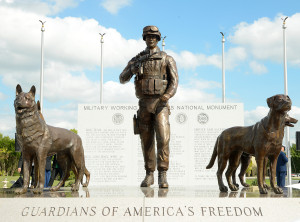
The Military Working Dog Teams National Monument. honors the canine heroes of every major U.S. conflict since World War II. (Credit: Ben Faske)
2014 South Dakota becomes the 50th state to adopt a felony animal anti-cruelty law. Some states impose penalties of up to $125,000 in fines and 10 years in prison for anyone who harms a cat or dog.


